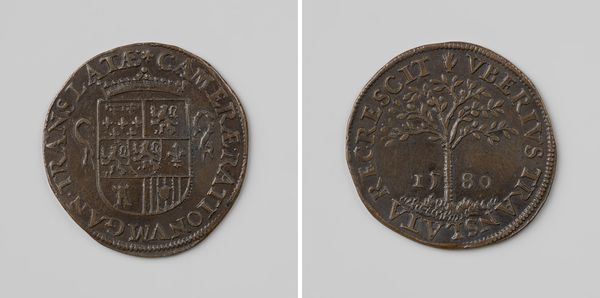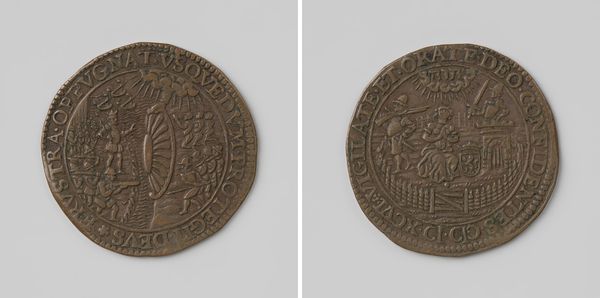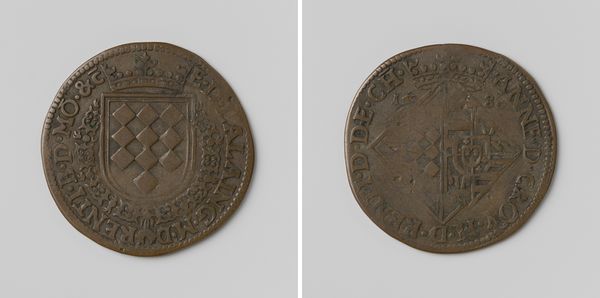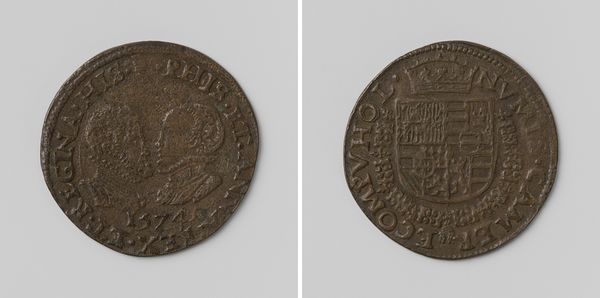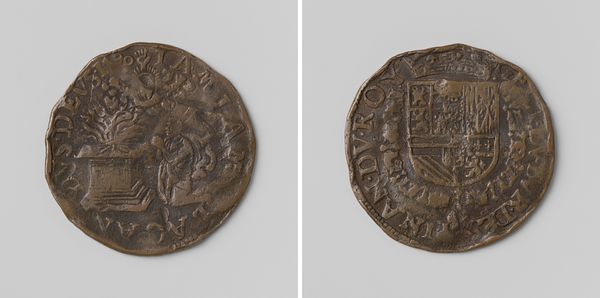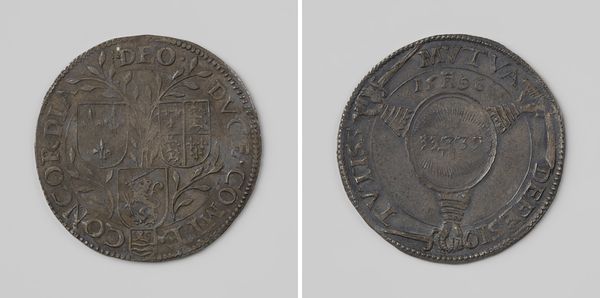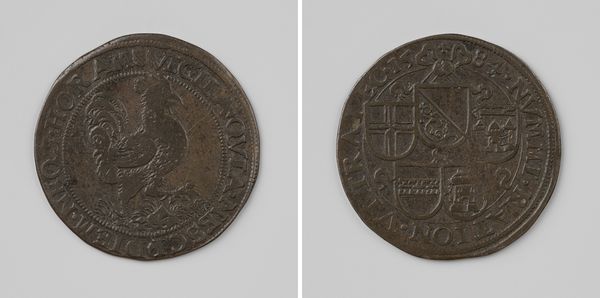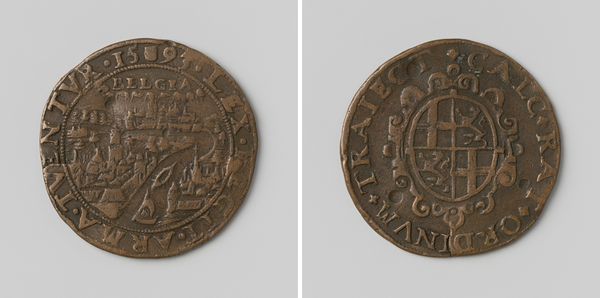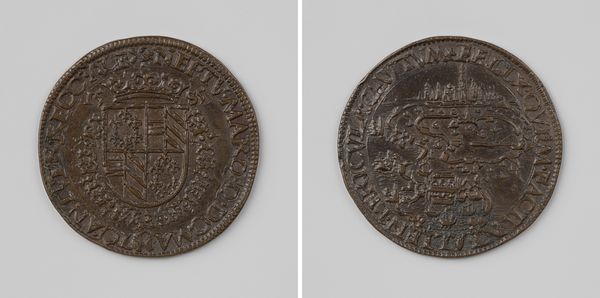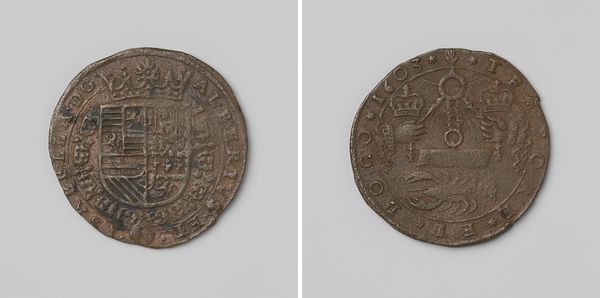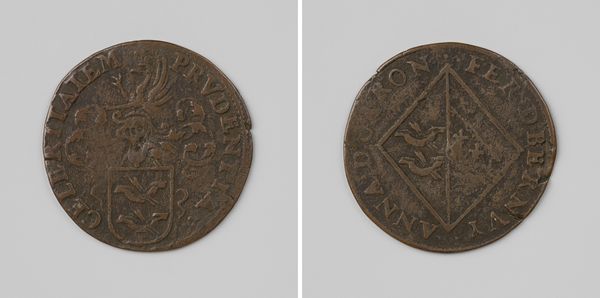
Inhuldiging van Francois-Hercule, hertog van Anjou als graaf van Vlaanderen te Gent 1582
0:00
0:00
carving, print, metal, relief, sculpture
#
decorative element
#
carving
# print
#
metal
#
relief
#
sculptural image
#
ancient-mediterranean
#
sculpture
#
carved
Dimensions: diameter 2.8 cm, weight 41 gr
Copyright: Rijks Museum: Open Domain
Editor: This is a 1582 metal coin currently held at the Rijksmuseum commemorating the inauguration of Francois-Hercule as the Count of Flanders. It's intricately sculpted with raised images and text on both sides. It feels...austere, yet celebratory. What stands out to you? Curator: Immediately, I see the shield on the obverse—crammed with symbols representing lineage and dominion. Each quarter tells a story, doesn't it? Consider the fleur-de-lis: centuries of French royalty distilled into that single emblem. Editor: Yes, and the lion rampant, a classic symbol of courage and power. Curator: Exactly. Notice how these symbols aren't merely decorative; they’re a carefully constructed narrative of power, designed to evoke specific emotional responses – loyalty, respect, perhaps even awe. This wasn’t just currency; it was propaganda. Who was intended to interact with the image? Editor: Well, I suppose the citizens of Flanders and anyone involved in the political landscape at the time. It’s interesting how they’d literally hold these messages of power in their hands. Curator: Precisely. The imagery is deliberate, designed to seep into the collective consciousness. Even the material itself, the metal, speaks to permanence and authority. And what do you see on the reverse? A sun and an inscription... Editor: It reads "FOVET ET DISCUTIT", and from what I recall means “It cherishes and destroys.” The sun with its rays on one side and then stormy sea on the lower section... it seems like an aggressive statement of power. Curator: Yes. This potent duality, this capacity to nurture and punish, further reinforces the intended message. Do you think the average person in 1582 would recognize those references and symbols? How would that understanding (or lack thereof) influence their relationship with this object? Editor: It’s almost a lesson in symbolic literacy! Now, when I see similar imagery, I will recall its deeper roots in historical narratives of power. Curator: And that's the enduring power of icons, isn't it? They connect us to the cultural memory, reminding us of the stories we continue to tell ourselves, visually.
Comments
No comments
Be the first to comment and join the conversation on the ultimate creative platform.
